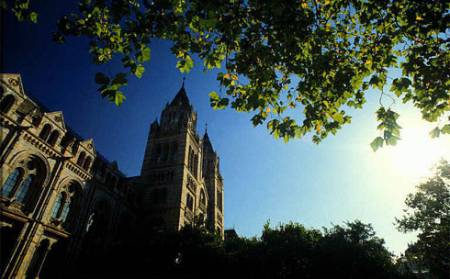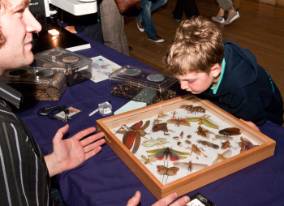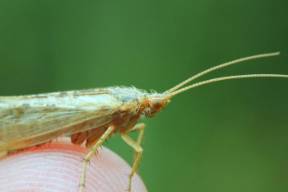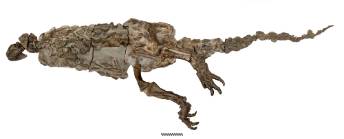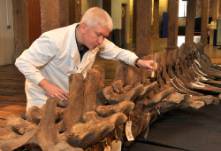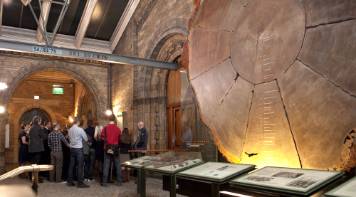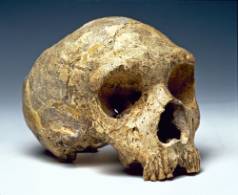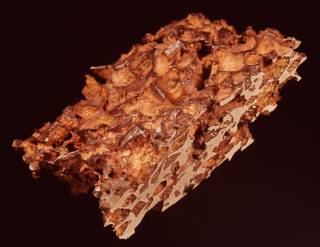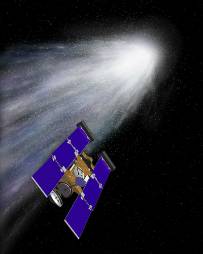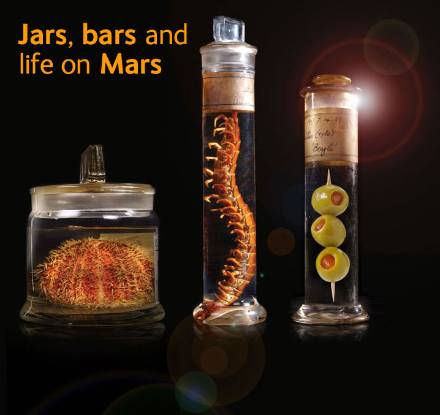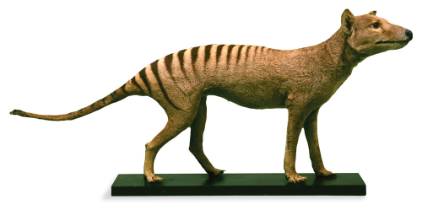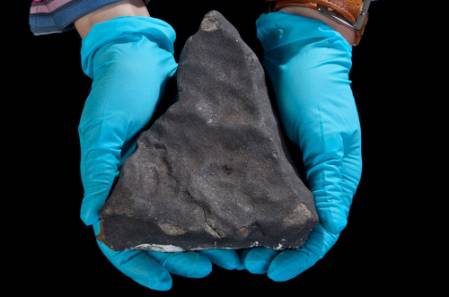In under 8 hours, from 16.00 today Friday 23 September 2011, Science Uncovered officially opens.
For those who aren't in the know, this is our big science festival welcoming 8,000+ visitors to the Museum to celebrate European Researchers' Night with over 300 over cities across Europe.
The Museum welcomes 1000s of visitors in to Science Uncovered tonight, 23 September 2011, from 16.00 to 23.00. After dark, out on the Wildlife Garden evening tours you may even spot a bat... Select all images to enlarge
Many of the pre-bookable events are already sold out now. But for those who are planning to just arrive and see what's on, there may be the chance of a few unbooked tours and plenty of activities you can just drop in and join or visit during the evening.
These include 18 science stations spread out across the whole Museum including the Central Hall and adjoining galleries, the Earth galleries and the Darwin Centre.
Highlights for families in the Darwin Centre: Entomology Station, more interesting insects to identify at the Natural History Roadshow and the Animal Vision show.
The event starts with the late afternoon activities that are more family-oriented, including the Animal Vision Show and Secrets of Spider Dating talk, 16.00 and 17.00 respectively in the Attenborough Studio.
While you're over in the Darwin Centre, you could join A Walk on the Wildside tour and step out into the Museum's lovely Wildlife Garden for an afternoon tour - later on these will include bat walks - admire the London Design Festival installations on your way - and head straight to the Natural History Roadshow to meet our identificaion team and see some interesting specimens.
Science Station highlights near the Central Hall: Left: Scelidosaurus specimen at the Palaeontology Station an example of this oldest British dinosaur species in Fossil Way. Right: Section of the Thames Greenwich whale in Mammals Gallery.
Most of the evening's more adult activities and tours will start from 18.00 including the Meet the Greenwich Whale Station in the Mammals galllery, where a section of the Thames Greenwich whale skeleton will be on show (above).
You can enter the Museum after 18.00 at both the main Cromwell Road entrance or the Exhbition Road entrance - head to the Welcome points at either entrance to locate your tours or the activities, research and displays you're interested in. If all the tours or bookable events are full, seek out a nearby science station or drop-in activity.
From Central Hall into the Museum along Fossil Way - Marine Invertebrates gallery - you'll find the Zoology Station where we're very
excited to be displaying a Tasmanian Tiger cub and our research into this species and are offering the chance to name an unnamed deep-sea worm...
Upper Central Hall galleries include the Giant Sequoia where you should look out for some ancient remains....
If you're in the Central Hall area, you can migrate into the upper gallery for The Vault tour or visit the science station by the Giant Sequoia and be fascinated by the ancient human occupation of Britain with its intriguing early remains.
Check out the Red Zone's Earth and Space Stations for meteoric, starry revelations...
Over in the Red Zone's Earth galleries, look out for the Earth Station with real meteories (above) and the Space Station featuring asteriod research. Or jon in the Science Fight Club sessions to see who wins some tough science debate rounds. In the Flett Theatre we also have the pleasure of hosting our prestigious Losing Our Principles? debate with David de Rothschild in the hot seat.
Bars are open to all visitors In the the main areas of the Museum, that is the Central Hall, Earth galleries and the Darwin Centre..
As discussion is one of the most important aspects, there are a myriad of opportunities to chat with scientists across the Museum. And particularly at The Science Bar in the Museum's Restaurant, where you can choose a tasty science topic from the menu and chat with scientists at tables over a drink.
In the Central Hall's Social Media Bar take advantage of free Wi-Fi and there are 2 computers to log on to our online Science Uncovered community.
The Social Media Bar in Central Hall is open to all visitors and also offers hot food. It will be the last bar open till 22.30. Maybe I'll see you there with some of my colleagues...
Find out what's on at Science Uncovered and download a map



